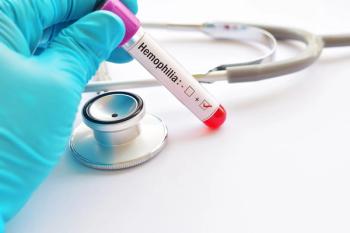
High pediatric readiness among EDs reduces mortality rates
In a recent study, children had improved short- and long-term mortality when treated in emergency departments with high pediatric readiness.
Children with injuries and medical conditions have reduced mortality risk when treated in emergency departments (EDs) with high pediatric readiness, according to a recent study.
Over 30 million children visit EDs annually, but over 97% of EDs treating children are nonchildren’s hospitals. To improve ED pediatric readiness, the National Pediatric Readiness Project (NPRP) was created.
Aspects of improved pediatric readiness include quality improvement, care coordination, personnel and competencies, policies and procedures, patient safety, and availability of key equipment and supplies.
High ED pediatric readiness has been associated with reduced mortality among children with critical illnesses, but the association among other pediatric groups is unknown. To determine the association between ED pediatric readiness and 1-year mortality among injured and medically ill children, investigators conducted a retrospective cohort study.
There were 983 EDs included in the study, all having been assessed by the NPRP. Inclusion criteria included having cared for at least 10 hospitalized children in a 6-year period. The first ED visit for each child aged under 18 years between January 1, 2012, and December 31, 2017, was recorded.
Participants included children requiring hospitalization, transfer to another hospital, or dying in the ED. Children were divided into groups based on whether they presented with injuries or medical illness based on hospital discharge records.
The weighted Pediatric Readiness Score (wPRS), used in the 2013 NPRP assessment, was used to determine ED pediatric readiness. A higher score from 0 to 100 indicated greater pediatric readiness.
Other variables included patient demographics, complex chronic conditions, health insurance payer, blood transfusion within 24 hours, Severity Classification System, hospital procedures, interhospital transfer, injury severity, and mechanism of injury. ED and hospital variables were measured using NPRP assessment, American Hospital Association data, and patient-level data.
In-hospital mortality was the primary outcome of the study. Additionally, 1-year mortality among patients was measured.
There were 796,937 children in the study cohort, 11.4% of which were hospitalized for injuries and 88.6% for medical conditions. Of the injured children, 2% died in the hospital. Of the children with medical conditions, 1.1% died in the hospital. The median ED wPRS was 73.
Injured children cared for in high-readiness EDs had a 60% reduced chance of in-hospital death, compared to a 76% reduction among those with medical conditions. Investigators estimated that an additional 288 lives could have been saved through increasing all lower-readiness EDs to high-readiness.
Outcomes to 1 year were measured in 545,921 children. There were 1316 deaths in the injury cohort during this time, 693 of which occurred in the ED, 477 as inpatients, and 146 after hospital discharge. In comparison, there were 6635 deaths in the medical cohort during this time, 4150 in the ED, 759 as inpatients, and 1726 after discharge.
Children cared for in low-readiness EDs had a shorter time to death, making up 90.6% of quartile 1 injury deaths and 88.5% of quartile 1 medical deaths. Children treated in high-readiness EDs had the lowest risk of death to 1 year.
Both short- and long-term mortality were reduced in pediatric patients treated in high-readiness EDs. This indicates pediatric deaths can be reduced through increasing pediatric readiness in all EDs.
Reference
Newgard CD, Lin A, Malveau S, Cook JNB, Smith M, Kuppermann N, et al. Emergency department pediatric readiness and short-term and long-term mortality among children receiving emergency care. JAMA Netw Open. 2023;6(1):e2250941. doi:10.1001/jamanetworkopen.2022.50941
Newsletter
Access practical, evidence-based guidance to support better care for our youngest patients. Join our email list for the latest clinical updates.











